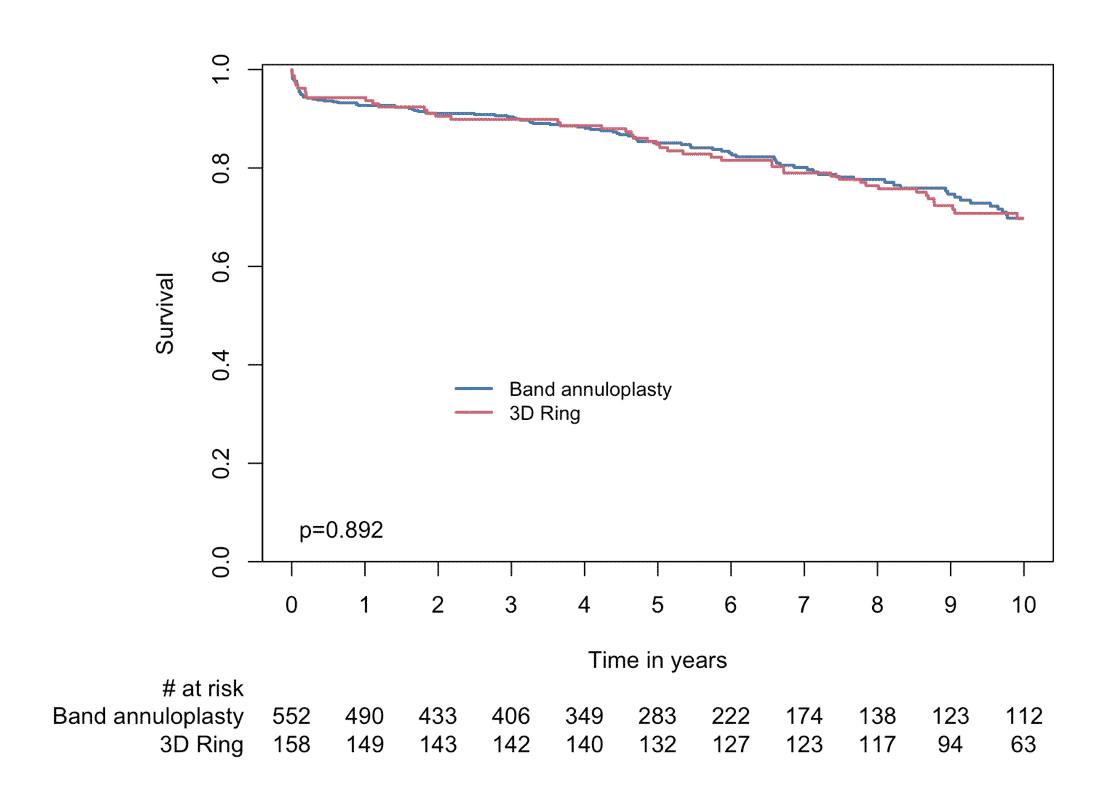
Tricuspid Valve Repair – Are Three-Dimensional Rings Better?
2Cardiology, Sheba Medical Center, Israel
Background: We hypothesized that ring type may affect outcome in tricuspid valve (TV) annuloplasty. We investigated early and late outcomes in patients who underwent TV annuloplasty using three-dimensional (3D) semi-rigid rings and compared them to patients who had open simple-band annuloplasty.
Methods: Of the 710 study patients who underwent TV surgery secondary to left heart disease (all underwent concomitant mitral valve operation), 552 (78%) underwent non-3D ring annuloplasty and 158 (22%) underwent 3D-ring implantation.
Results: Early mortality did not differ significantly between the groups, with 23 (4.2%) and 7 (4.4%) in- hospital mortalities in the non-3D and 3D groups respectively (p=1.000). There was no difference in operative complications. During a mean follow-up of 80±50 months, there were no difference in the mortality hazard between the groups (log-rank p=0.892, Figure). During this period 6 patients (1.1%) in the non-3D group and 4 patients (2.5%) in the 3D-group required reoperation on the TV valve due to recurrent TV regurgitation (TR) (p=0.329). At the latest follow-up there were 15 patients (3.1%) in the non-3D group, and 6 patients (3.8%) in the 3D group, that had recurrent severe TR (log-rank p=0.765).
Conclusion: Since early mortality, late functional capacity and late re-operation rates did not differ significantly between the groups, 3D rings are not preferable to simple annuloplasty bands.

Powered by Eventact EMS